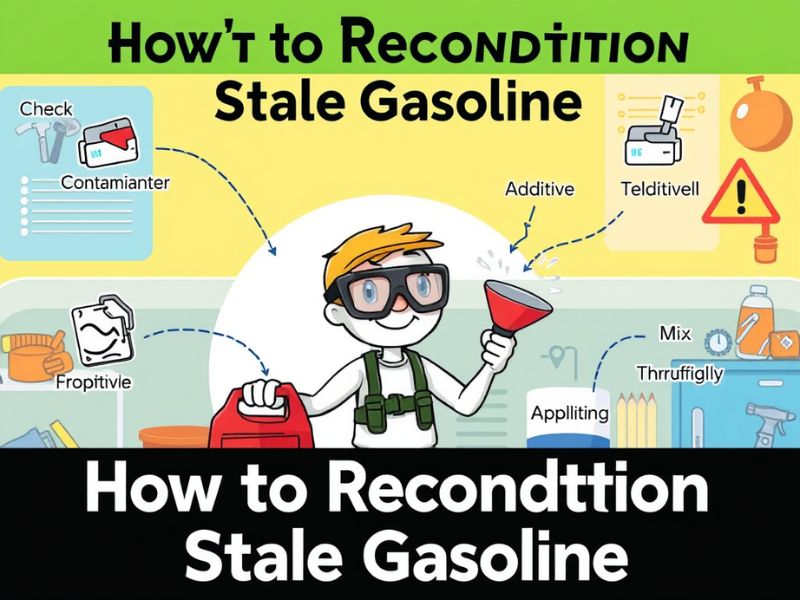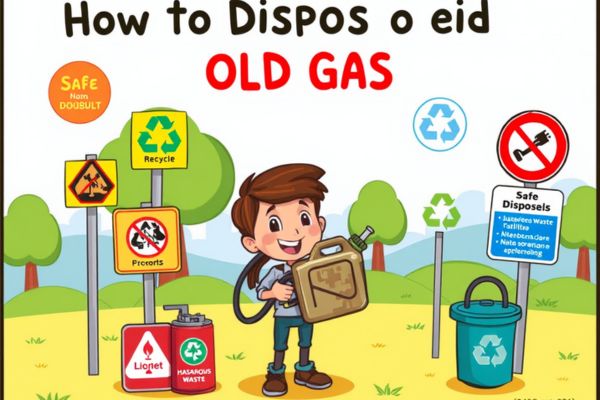Introduction
Gasoline does not last forever. It ages and loses potency. Stale fuel can harm engines and clog parts. Improper disposal of old fuel also poses a risk to health and the environment. Understanding how to dispose of gasoline correctly is crucial.
Safety and responsibility go hand in hand. You can avoid fire, spills, and legal trouble by following simple steps. This guide covers old gasoline disposal, stale fuel management, and hazardous waste facility locator tips. You will learn to handle petrol with care and confidence.
What Is Considered Old and Bad Gas?
Old gas changes color, smell, and performance. It often appears darker and cloudier. The engine may hesitate, stall, or ping. These are gasoline contamination signs. When the check engine light comes on, bad fuel may be to blame.
Bad gas causes rough idling and power loss. It cuts fuel economy and raises risk of fire or explosion. If gasoline fails these tests, it needs disposal or reconditioning.
How to Dispose of Old Gasoline?
Follow these steps to ensure safe old gasoline disposal.
Step 1. Confirm whether your gas has truly been contaminated or just ages naturally.
Compare a small sample of old gas with fresh fuel. If it smells sour or looks dark, it has lost potency. If you see debris or rust flakes, it is contaminated.
Step 2. Search for the nearest disposal site for gasoline and hazardous materials.
Use online tools or local contacts to find a gasoline recycling center or a hazardous waste facility locator. You can call the fire department or the waste management office. Many auto shops also accept old gas.
Step 3. Transfer the gasoline to a certified container
Pour the old gas into a certified container such as a jerry can. Use a funnel and pour slowly. Leave a small air gap. Seal tightly. Label the container “Old Gasoline.”
Step 4. Go to the disposal facility
Drive carefully and keep containers upright. Hand over the gasoline to the facility staff. Follow any site-specific instructions. Do not mix with other wastes.
| Step | Action | Tips |
| 1 | Confirm gas condition | Compare fresh vs old sample |
| 2 | Find a disposal site | Call the local waste or fire department |
| 3 | Transfer to a certified container | Use a funnel, leave an air gap |
| 4 | Deliver to the facility | Drive safely, follow the rules |
Some Extra Tips for Safe Handlings of Gasoline
- Before buying: Check hazard labels on gas cans and the SDS (Safety Data Sheet) for gasoline.
- When using: Practice safe handling of petrol and avoid mixing different fuel types.
- When disposing: Use proper containers and follow flammable liquid regulations.
How to Recondition Stale Gasoline

You can restore mildly aged gasoline. First, filter out debris. Then mix one part old gas with three parts fresh fuel. Add fuel stabilizer treatment. Let it sit for a few hours. This can extend fuel life and avoid waste.
FAQs
Can I mix old gas with fresh fuel?
Yes. A 1:3 ratio of old to new fuel is safe to recondition stale fuel.
Where do I find local waste drop sites?
Search online or call your city’s waste department for finding local waste drops.
Is it illegal to dump gas in the trash?
Yes. Illegal dumping penalties apply and risk finding the to environmental impact of dumping.
What container is best for old gasoline?
Use metal or plastic jerry cans certified for gasoline. Check fuel storage safety codes.
How do I prevent fire risks?
Store away from flames and follow fire and explosion prevention guidelines.
Conclusion
Proper disposal of old gasoline protects your engine, your health, and the planet. By following a few easy steps, you ensure safe handling and EPA guidelines for fuel disposal. Always confirm gas quality, find a trusted site, and transfer fuel carefully.
Sometimes, you can rejuvenate stale gas with a fuel stabilizer treatment and mix method. This saves money and reduces waste. Stay safe, avoid illegal dumping, and keep your gas clean.














